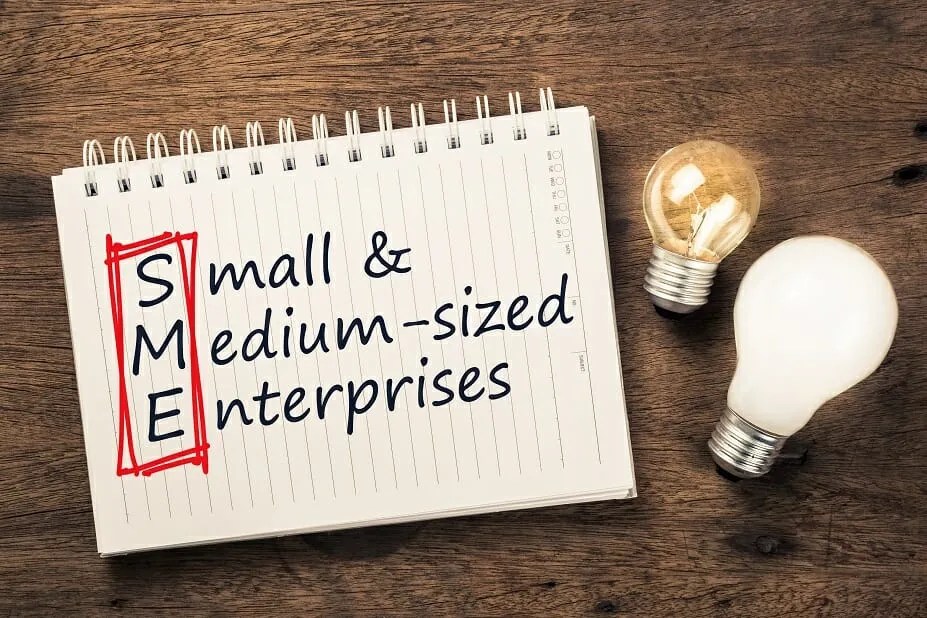Independent businesses with around 50-250 employees
Written byCFI Team
Over 2 million + professionals use CFI to learn accounting, financial analysis, modeling and more. Unlock the essentials of corporate finance with our free resources and get an exclusive sneak peek at the first module of each course. Start Free
SMEs, or small and medium-sized enterprises, are defined differently around the world. The country a company operates in provides the specifics on the defined size of an SME. The sizing or categorization of a company as an SME, depending on the country, can be based on a number of characteristics.
The traits include annual sales, number of employees, the number of assets owned by the company, market capitalization, or any combination of these features. The United States also defines SMEs differently from one industry to another.

SMEs make up the majority of the businesses operating around the world. Generally, they are independent firms with less than 50 employees. However, the maximum number of employees is different from one country to the next. For most companies, the upper range sits around 250. Some countries dock the total number of employees at 200. The United States defines an SME, among other characteristics, as those with no more than 500 workers.
Importance of Small and Medium-sized Enterprises
1. Favors flexibility and innovation
Many technological processes and innovations are attributed to small and mid-size enterprises (SMEs). Since large enterprises tend to focus on improving the old products to produce more quantities and obtain general benefits of dimensional economy, such companies are not as flexible as SMEs.
In order to be successful, SMEs focus on creating new products or services; hence, they are capable of adapting faster to the changing requirements of the market. SMEs play a vital role in shaping a country’s economy. They can be considered an attractive and huge innovative system. Due to the socially and economically beneficial effects of the SMEs, the sector is considered an area of strategic interest in an economy.
2. Creates a more competitive and healthier economy
Small and medium-sized enterprises stimulate competition for the design of products, prices, and efficiency. Without SMEs, large enterprises would hold a monopoly in almost all the activity areas.
3. Assists big enterprises
Small and medium-sized enterprises help large companies in some areas of operation that they are better able to supply. Hence, SMEs are dissolved immediately; the big enterprises will be forced to be involved in more activities, which may not be efficient for these enterprises. Activities such as supplying raw materials and distributing the finished goods created by big enterprises are developed more efficiently by SMEs.
The significance of small and medium-sized enterprises is also recognized by the governments. Hence, they offer regular incentives to SMEs, such as easier access to loans and better tax treatment.
SMEs in the United States
As mentioned earlier, the United States adheres to varying definitions for SMEs and guidelines that differ from one industry to another. The practice is in accordance with the North American Industry Classification System (NAICS). The system was collectively developed by the U.S., Canada, and Mexico to help establish a set of guidelines and standards that enable the collection and analysis of business operational statistics in North America.
The Small Business Administration (SBA) in the U.S. is responsible for creating a list of standards and characteristics that businesses must meet in order to be considered SMEs. The list is not specifically targeted for SMEs because it relates primarily to smaller companies.
However, most SMEs are required to meet all of the statutes and guidelines on the list, which also factors in the requirements and codes of operation established by the NAICS. It is important because many smaller businesses are able to apply for government contracts and funding, provided they meet all the necessary codes.
The U.S. also has a specific definition of SMEs based on the industry they operate in. For example, if a company is part of the manufacturing industry, it can be classified as an SME if it has a maximum of 500 employees, but a company involved in the wholesale trade can only have 100. Differences also exist among the sectors of an industry.
For example, in the mining industry, companies that mine for nickel or copper ore can have up to 1,500 employees, but a silver mining company can only have a maximum of 250 employees in order to be considered an SME.
Canadian SMEs
In Canada, SMEs are businesses that employ fewer than 500 individuals. Businesses with 500 or more employees are strictly considered large businesses. To further break it down, Industry Canada – an organization that works to facilitate economic and industry growth in Canada – deems small businesses as having fewer than 100 employees, provided the company produces goods. The cut-off for small businesses that provide services is 49 or fewer employees. Companies that fit somewhere between these employee-count cut-offs are considered SMEs.
Another organization, Statistics Canada – which conducts research and collects data related to businesses and commerce in the country – falls in line with the requirement that SMEs have no more than 499 employees. However, it also – based on research and data collected – stipulates that SMEs have less than $50 million in gross revenue.
Key Takeaway
Around the world, small to medium-sized enterprises make up a significant portion of the total number of global businesses. It is important to remember that while there are similarities, each country – as well as the industries and sectors within them – may adopt different definitions for an SME.
Related Readings
Thank you for reading CFI’s guide to Small and Medium-sized Enterprises. To keep learning and developing your knowledge of financial analysis, we highly recommend the additional CFI resources below:
- Careers in Commercial Banking Course
- Business Drivers
- Labor Force KPIs
- State Owned Enterprise (SOE)
- Valuation Methods
- See all accounting resources